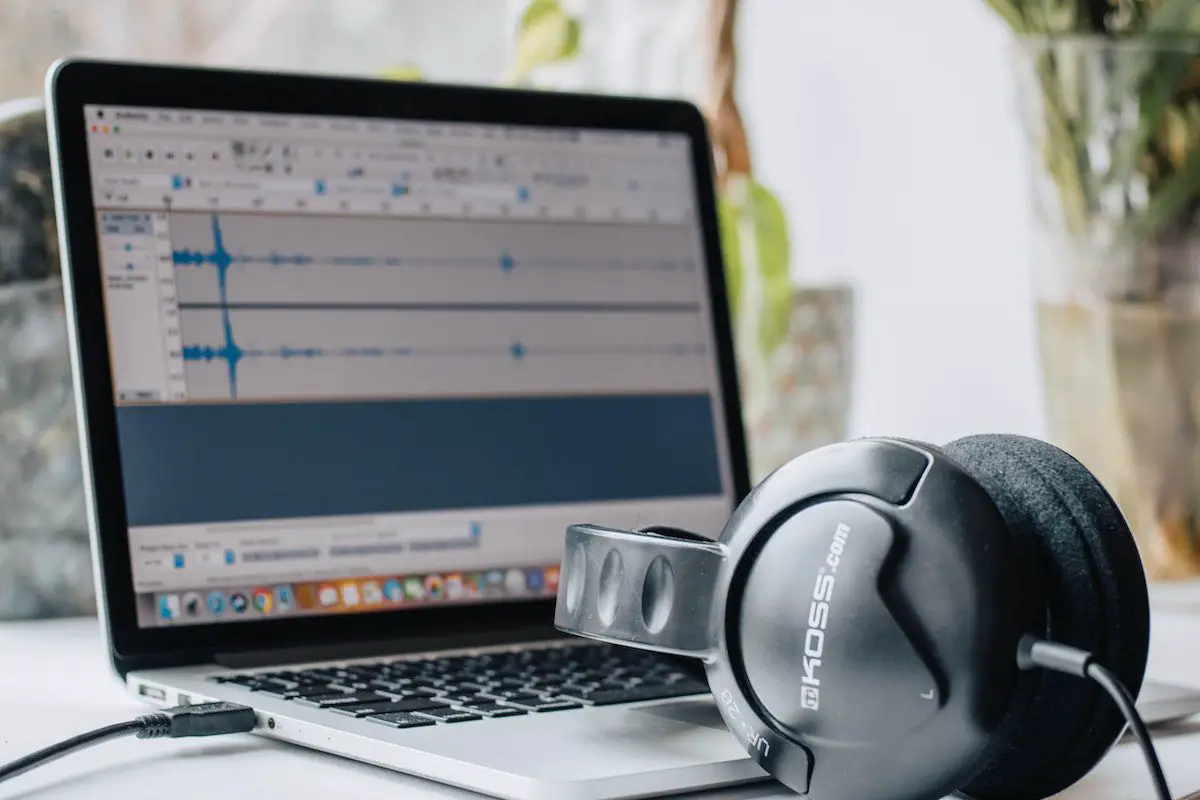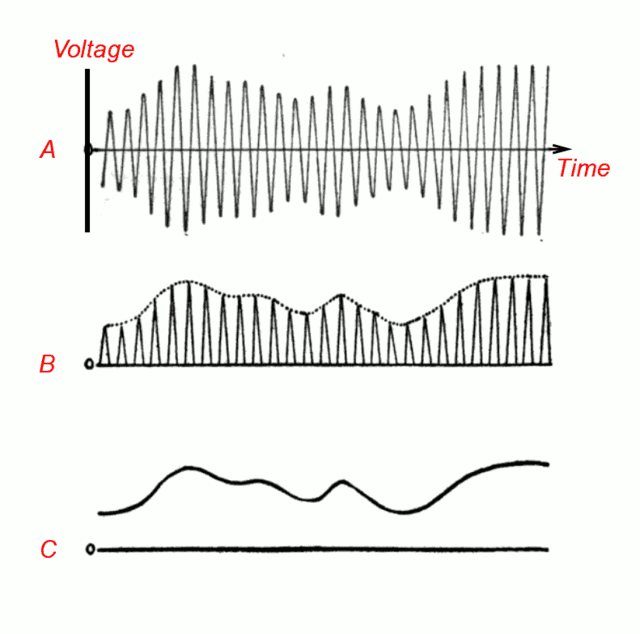In audio production, there’s a captivating technique that adds depth, character, and richness to sound: modulation. But what is modulation? You know, that oomph that takes it to a whole new level? It’s like the secret sauce that turns a good track into a banger. By the end of this blog post, you’ll know the ins and outs of modulation and how to apply it to your own music. Get ready to modulate like a boss!
What is modulation? Modulation is the technique of altering or manipulating audio signals to introduce changes in frequency, amplitude, or phase. It adds depth, texture, and movement to sound, allowing for creative and expressive audio effects.
How does modulation work in music production?
Alright, so we’ve established that modulation is crucial for adding depth and interest to your music. But how does it actually work in music production? The key is to understand the relationship between a sound’s parameters and the modulation sources you can use to control them.

In a nutshell, modulation involves connecting a modulation source, like an LFO (low-frequency oscillator) or an envelope, to a sound parameter such as pitch, volume, or filter cutoff. This connection allows the source to manipulate the parameter, creating dynamic variations in the sound.

For example, let’s say you want to add some movement to a bassline. You could use an LFO to modulate the filter cutoff, which would create a rhythmic, pulsating effect. By adjusting the LFO rate, depth, and shape, you can fine-tune the modulation to fit your track’s vibe. The more you experiment with different modulation sources and parameters, the more you’ll unlock the full potential of your music. So don’t be afraid to get creative and explore the limitless possibilities of modulation!
AKAI Professional MPK Mini MK3

AKAI Professional MPK Mini MK3
What are the different types of modulation?
Now that you’re getting the hang of modulation, you might be wondering, “What types of modulation can I use in my music?” Great question! There are several common types of modulation that producers often use to add flavor to their tracks. Let’s break down a few:
- Amplitude Modulation (AM): This type of modulation involves changing a sound’s volume over time. For example, you could use an LFO to create a tremolo effect by modulating the amplitude of a guitar or synth sound.
- Frequency Modulation (FM): FM involves modulating the frequency (or pitch) of a sound, which can result in complex and harmonically rich timbres. FM synthesis, popularized by synths like the Yamaha DX7, is a great example of how this technique can be used to create unique sounds.
- Filter Modulation: By modulating the cutoff frequency of a filter, you can create dynamic changes in a sound’s tonal character. This technique is often used to add movement and expression to pads, leads, and basslines.
- Pan Modulation: This type of modulation involves changing the position of a sound in the stereo field, which can help create a sense of depth and space in your mix.
- Wavetable Modulation: Wavetable synthesis involves scanning through a series of waveforms to create a continuously evolving sound. By modulating the position of the wavetable, you can achieve unique and evolving timbres.
Why is modulation important in audio production?
You might be wondering, “Why should I care about modulation?” Well, it’s all about adding depth and variety to your music. Modulation creates movement, builds tension, and keeps your audience engaged. Imagine eating the same meal every day—boring, right? That’s what your tracks will feel like without modulation.
For instance, let’s say you have a simple synth pad in your song. By modulating the filter cutoff, you can create a sense of movement and growth. It’s like taking your listeners on a sonic journey instead of keeping them stuck in a never-ending loop.
When I first started producing music, I didn’t quite get the hype about modulation. I thought my tracks were good enough without it. But one day, while experimenting with a new synth, I accidentally modulated the pitch of a lead sound. It created this amazing, expressive vibe that brought the whole track to life. From that moment on, I was hooked on modulation, and I knew it was the secret ingredient my music needed.
How can you apply modulation in your own tracks?
So you’re all fired up to start using modulation in your music, but where do you begin? Here are some practical tips to help you get started with applying modulation in your own tracks:
- Start small: If you’re new to modulation, begin with simple techniques like amplitude or filter modulation to get a feel for how they affect your sound. Once you’re comfortable, you can explore more advanced techniques like FM or wavetable modulation.
- Experiment with different modulation sources: Don’t limit yourself to just LFOs and envelopes! Try using other sources like MIDI controllers, automation, or even audio signals to modulate your sounds.
- Layer modulation: One of the coolest things about modulation is that you can layer multiple modulations to create complex and evolving textures. For example, try using an LFO to modulate the filter cutoff of a pad sound while also using an envelope to control the amplitude.
- Map modulation to macros: Many synthesizers and music production software allow you to map modulation sources to macro controls. This makes it easy to tweak your modulations on the fly and find the sweet spot for your track.
- Learn from the pros: Study your favorite tracks and try to reverse-engineer the modulation techniques they used. This can help you develop your own unique approach to modulation and take your music to the next level.
Advantages and disadvantages of modulation in audio production
Modulation is an essential tool in audio production, allowing for an incredible range of sound dynamics and richness. Yet, like all tools, it brings with it a unique set of benefits and drawbacks. Understanding these can help you harness modulation’s full potential while mitigating its downsides.
Advantages of modulation
Modulation’s many benefits are a testament to its versatility in audio production. Here’s a glimpse into why it’s a favorite tool for many audio professionals:
- Enriches Sound: Modulation can add depth, variety, and texture to sounds, making them more engaging and appealing to the listener.
- Controls Signal Properties: It allows precise control over audio signal properties like amplitude, frequency, and phase, which helps in crafting the desired sound output.
- Prevents Signal Interference: It can help prevent signal interference, which is particularly important in complex audio setups.
- Broadens Creative Options: Modulation opens up a wide range of creative possibilities, allowing producers to experiment and innovate in their sound designs.
Disadvantages of modulation
While modulation offers numerous benefits, it’s also crucial to be aware of its potential pitfalls. These are some disadvantages that may arise when using modulation in audio production:
- Complexity: Modulation techniques can be complex, requiring a good understanding of audio engineering to use effectively.
- Potential for Overuse: There’s a risk of overmodulation, which can lead to distortion and compromise the audio quality.
- Hardware Dependency: Some types of modulation require specific hardware or software, which could increase production costs.
- Demands Precision: Poorly executed modulation can negatively impact the sound, making it feel unnatural or unpleasant.
- Time-Consuming: Depending on the project and the specific type of modulation, it can be time-consuming to implement properly.
If you want even more tips and insights, watch this video called “Music Production Lesson: Understanding Modulation with Loudon Stearns” from the Berklee Online YouTube channel.
Frequently asked questions (FAQ)
Do you still have questions about modulation? Below are some of the most commonly asked questions.
How do I choose the right type of modulation for my track?
There’s no one-size-fits-all answer to this question, as the right type of modulation depends on your creative vision and the specific sound you’re working with. The best approach is to experiment with different types of modulation and see what works best for your track. Don’t be afraid to think outside the box and try new techniques!
Can I use modulation on any sound or instrument?
Absolutely! Modulation can be applied to virtually any sound or instrument, from synths and guitars to vocals and drums. The key is to find the right balance and use modulation to enhance the sound rather than overpower it.
What are some common mistakes to avoid when using modulation?
One common mistake is overusing modulation, which can make your track sound chaotic or overly busy. Remember, less is often more—use modulation to add subtle depth and movement to your music rather than going overboard. Another mistake is using the same modulation techniques on every sound, which can make your track feel repetitive or predictable. Try to vary your modulation techniques to create a more dynamic and engaging listening experience.
Conclusion
Well, folks, we’ve reached the end of our modulation! We’ve taken a deep dive into the world of modulation, from understanding its importance to exploring different types and techniques. Hopefully, by now, you’re feeling inspired and ready to get your hands dirty with some mod-tactic sound design. Remember, modulation is all about experimentation and creativity, so don’t be afraid to think outside the (wave)box!
I read and reply to every comment, so if you have any questions or feedback, drop a line below. If you found this article helpful, share it with a friend, and be sure to check out my full blog for more tips and tricks on modulation. Thanks for reading, and happy modulating!
Key Takeaways
This article covered modulation and its importance in music production. Here are some key takeaways:
- Modulation is essential for adding depth, movement, and variety to your music.
- Modulation involves connecting a source, like an LFO or envelope, to a sound parameter, such as pitch, volume, or filter cutoff.
- Common types of modulation include amplitude modulation, frequency modulation, filter modulation, pan modulation, and wavetable modulation.
- To apply modulation in your own tracks, start small, experiment with different sources and layer modulations, map modulation to macros, and learn from the pros.
- Modulation can be applied to virtually any sound or instrument, and experimenting with different techniques can lead to unique and engaging results.















